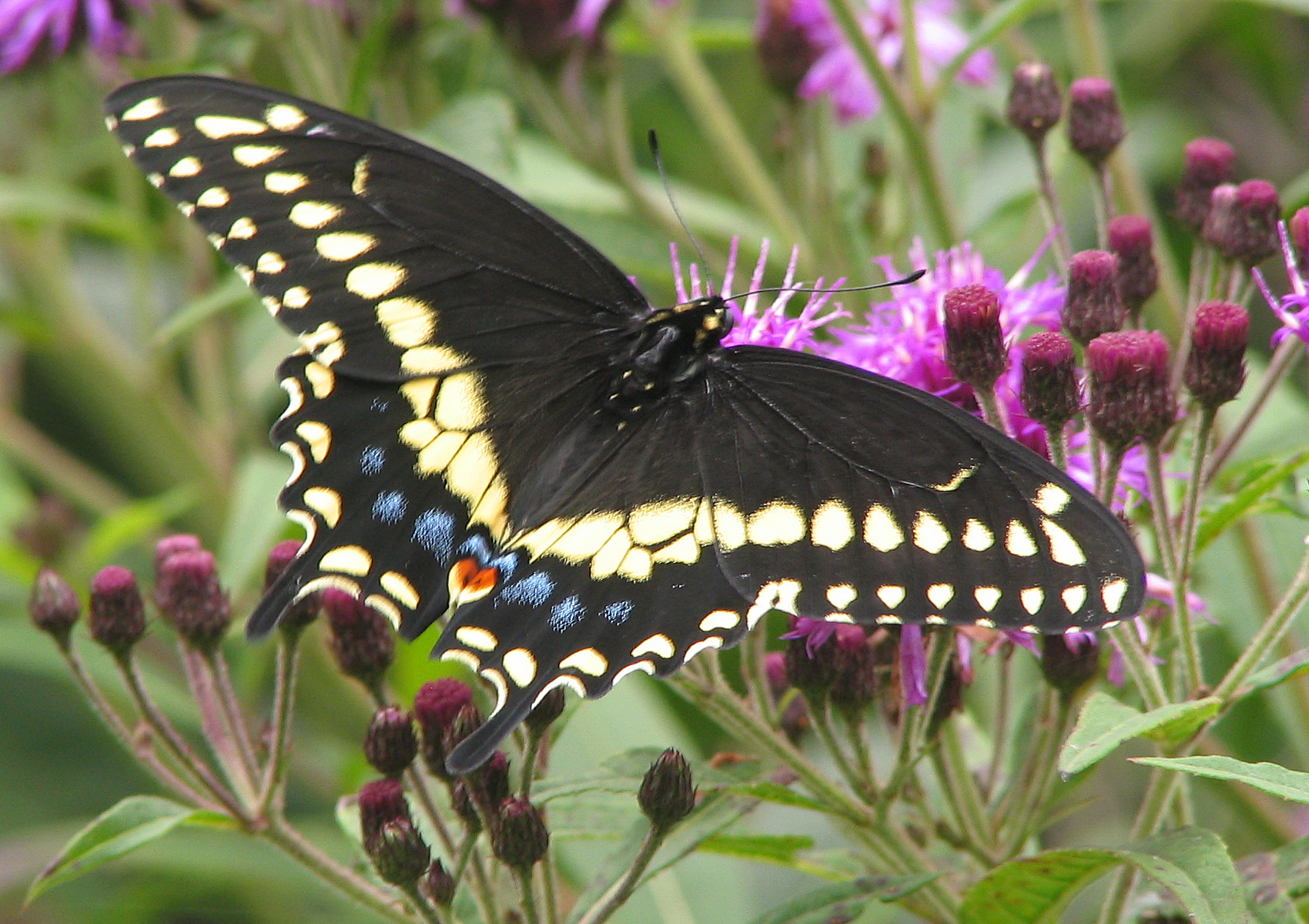
Papilio polyxenes (Papilio polyxenes)
Phylum — arthropoda
Class — insecta
Order — lepidoptera
Family — papilionidae
Genus – papilio
Appearance
The younger caterpillars are black with a white spot in the middle of the body. The older caterpillars are light green with transverse black stripes, on which there are yellow spots.
Papilio polyxenes has a wingspan of 6.9–8.4 cm, and females are typically larger than males. The upper wing surface is black with two rows of yellow spots – these spots are large and bright in males and smaller and lighter in females. Females have a prominent blue area between these two rows, while males have a much less prominent blue area.
Both sexes show a red spot with a black bullseye on the inner hind margin of the hindwings and an isolated yellow spot on the front edge of the wings. The ventral side of wings of males and females are essentially identical: forewings have two rows of pale yellow spots, and hindwings have rows of bright orange spots separated by areas of powdery blue. The ventral side also acts as an effective mimic for both males and females for protection against predators.
Habitat
Papilio polyxenes are found from southern Canada through to South America. In North America they are more common east of the Rocky Mountains. They are usually found in open areas like fields, parks, marshes or deserts, and they prefer tropical or temperate habitats.
Behavior
Papilio polyxenes demonstrates daily activity. It overwinters in the pupa stage in cold regions.
Male butterflies secure territories to use in mate location and courtship. These territories contain no significant concentration of nectar sources, larval host plants or night settling sites. Males will aggressively chase other males who approach their territory, and then return to their territory.
Core body, or thoracic temperatures of around 24 degrees Celsius are necessary for flight. Therefore Papilio polyxenes will regulate thoracic temperatures by behaviorally changing their abdomen position, wing position, orientation to the sun, perching duration, and perching height. In lower temperatures, butterflies will raise their abdomens above flattened wings, and will perch relatively close to the ground. In higher temperatures, butterflies will lower their abdomens in the shade of their wings.
Like other caterpillars of this family, the caterpillars of this butterfly have an osmetrium – a gland behind the head that extends in danger and looks like two long orange "horns".
Diet
Butterflies feed on nectar preferring thistle flowers. Males can often be found in drying puddles where they absorb water with minerals.
The larvae of Papilio polyxenes are attracted to Umbelliferae (or Apiaceae) oils.
Reproduction
For their reproduction you need a terrarium with a size of 50 x 50 x 70 cm. Females lay single eggs on host plants, usually on the new foliage and occasionally on flowers. Eggs are pale yellow. The incubation period is 4-9 days. It is better to keep the caterpillars in containers with a mesh lid for 6-8 insects. The food plant should be placed in the container. The temperature in the terrarium is 20-22 oC at the humidity of 60-70%.
The caterpillar develops for 3 weeks. The pupae may be green or brown, but not depending on surroundings or the background on which they have pupated. The color of the chrysalis is determined by a local genetic balance that ensures the majority of pupae will blend in. The pupa stage lasts 2-3 weeks. The butterfly lives for about a month.
In captivity
The mesh terrarium with a size of 50 × 50 × 70 mm is suitable for keeping butterflies. Room temperature is necessary. Daylight time is 12 hours. You can feed the butterflies with honey syrup diluted with boiled water in a ratio of 1: 10.
 Russian
Russian
 English
English























